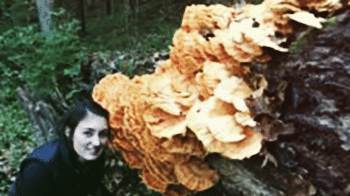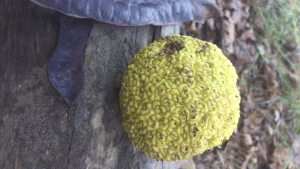On Thursday, May 28th Greenacres’ garden staff had the privilege of spending the day with Eliot Coleman and his daughter, Clara Coleman. Both Colemans are experienced market gardeners with innovative spirits and a combined wealth of knowledge. The elder Coleman started his small vegetable farm in 1968, a back-to-the-lander who not only thrived, but revolutionized his field. Though perhaps not widely known outside the vegetable growing community, Coleman’s influence has indeed been tremendous.
It is difficult to tease apart the ways that Coleman has directly and indirectly influenced the tools and techniques used in Greenacres’ operation alone, as many have become the industry standard, synonymous with small-scale vegetable production. Coleman’s hoop benders (Quick HoopsTM), widely used at Greenacres, are relatively inexpensive tools that use locally-available materials to create the frame for low tunnels and high tunnels that protect plants and extend the growing season. Coleman also adapted the concept of the broadfork, used in both the Greenacres production and education gardens to aerate and prepare gardens with minimal physical strain on the user and without destroying soil structure. His wire weeder and collinear hoe allow shallow cultivation and weed control without disturbing crop plants’ roots or soil structure.
A glance through the Johnny’s Selected Seeds catalog reveals just how much Coleman has influenced the small grower with tools that streamline and simplify the operation, from mobile high tunnels to seeding tools. His four season growing tools and techniques are among his most important contributions. In Maine, where Coleman’s farm (with wife and renowned gardener Barbara Damrosch) is located, winter production presents extra challenges. For years, he has been identifying voids in the resources for producers of his scale and working to change this, designing and marketing tools through Johnny’s. Indeed, Coleman continues to innovate, bringing engineering students from the local university to his farm this summer to design tools.
When Coleman first met up with the Greenacres group in the morning he examined the Dutch hoe one staff member had been using, engagingly explaining the research and logic that had led him to develop the closely related collinear hoe, with its angle that allows the operator to use the tool while remaining upright (like dancing, according to Coleman). Many of Coleman’s innovations come from his travels to Europe (which he humbly reminded us), where he has met farmers, visited hardware stores (his favorite places to visit when traveling), and brought ideas back, adapting them for himself and other growers.
The day continued at Greenacres’ newest vegetable field, in its first year of cultivation since being converted from pasture. Coleman discussed the value of sod to act as a source of fertility that doesn’t require hauling (like compost); sod can be grown in place and tilled in. Over the course of the day the group discussed everything from possible locations for a high tunnel at Greenacres to irrigation methods to the best soil and sowing techniques for carrots. Coleman visited the site where Greenacres composts horse manure and he visited a field currently planted in cover crops, on its way to being reclaimed for vegetable production. He also spent time in the farm store discussing creative marketing techniques for Greenacres’ produce. The day’s conversations even included some ideas for new tools not yet on the market.
Coleman remarked on the privilege and responsibility that Greenacres’ producers have to, “learn things and tell people about it.” Indeed, with the recent instatement of Greenacres’ first Agriculture Resource Coordinator, the Foundation is collecting data across its production operations to scientifically evaluate its practices, from soil management to broiler chicken feeding.
A fascinating point of discussion was a technique that Greenacres vegetable garden manager, David Chal, has been using of covering the soil in thick black plastic to retain moisture and germinate weed seeds before planting. Coleman typically solarizes (heats) the soil using clear plastic to kill weed seeds down a few inches or uses a flame weeder to kill fast-emerging weeds before slow-germinating crops like carrots emerge. It was exhilarating to hear the discussion of each technique’s merits between growers with over 40 years’ difference between them in age, each as passionate and committed to continuing to develop his skills as the other. Coleman wisely suggested doing a study including these techniques to evaluate the effect on soil life.
When Coleman met with the education team we discussed our views on aquaponic growing for production and education, using an unheated hoophouse for education, our composting and farm-to-table cooking programs (including the value and challenge of involving parents), and creative ways to benefit the community with our produce while providing educational opportunities.
The day concluded with Coleman’s public address titled, “Nothing is Impossible.” He followed this theme throughout the keynote, discussing everything from his beginnings as a climber and kayaker to his innovations that refuted nay-sayers’ claims that he couldn’t grow tomatoes successfully in Maine, harvest vegetables through the winter, or attract customers to his somewhat remote property to purchase produce. It was an honor to listen to the words of a true pioneer who has inspired and greatly influenced countless small farmers and gardeners.



